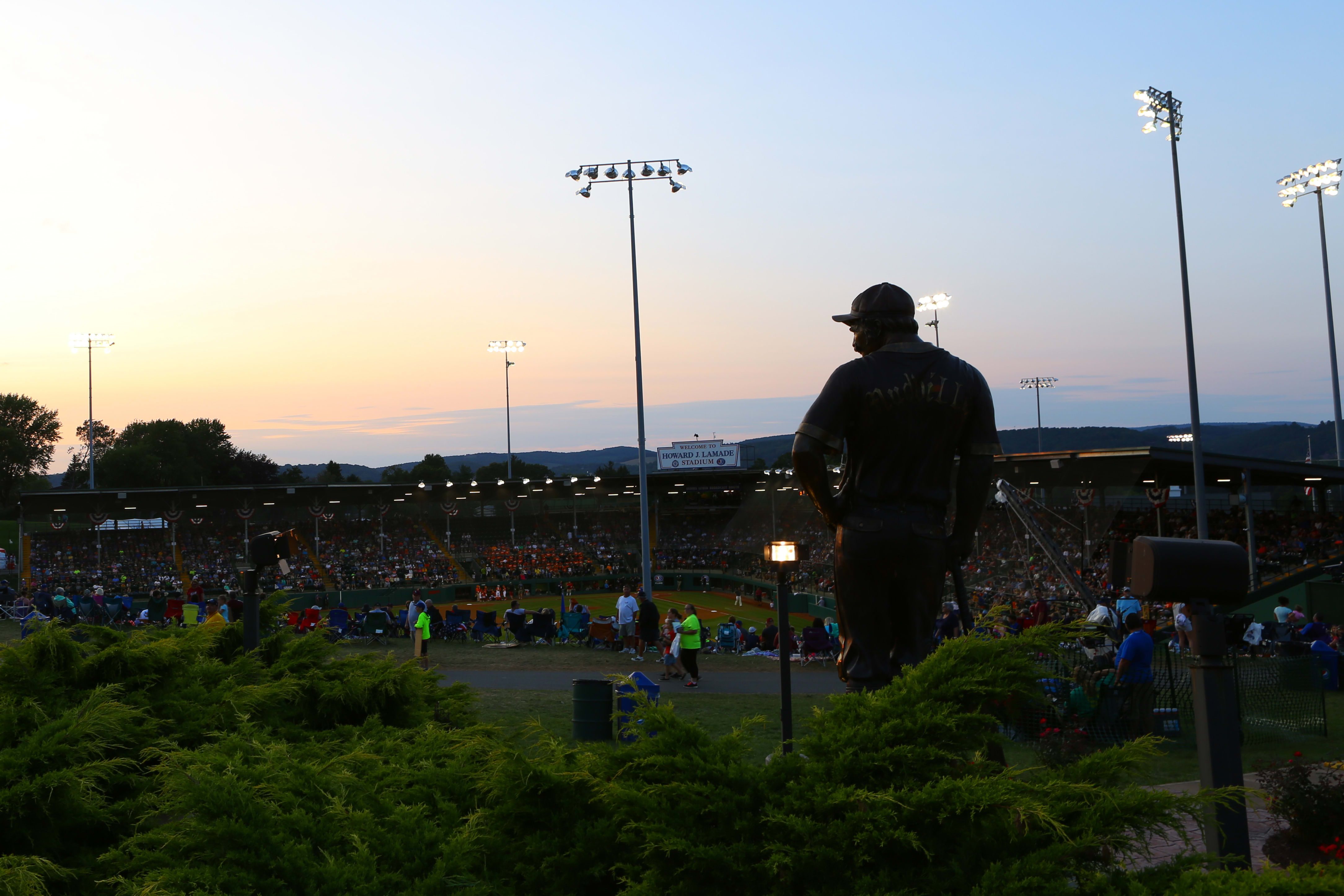
June 6, 1939, 80 years ago, Carl Stotz gathered some of his friends and neighbors, and about 30 boys in the west end of Williamsport, Pennsylvania, on a baseball field that had been scaled down just for them for the first-ever Little League® game. It gave those children the chance to learn the game and, because of the scaled-down field, it was easier for the pitcher to reach home plate and easier for a batter to run down the first base line. It was a game that was made to fit the kids, so that they could have more fun playing.
June 6, 1944, 75 years ago, the Allied forces invade Normandy. The decisive victory was the beginning of the end of World War II. Less than a year later, the war was over, and a whole generation of families were looking to reconnect. In the aftermath of the war, the fledgling Little League program started to grow. For the first time, a tournament was held in Williamsport in 1946 with a few local programs. In 1947, that tournament grew into what was then The National Little League Tournament, and is now known around the world as the Little League World Series.
As the world has evolved over the last 80 years, so has Little League. Mr. Stotz’s dream of modifying the game of baseball to be more approachable for children led to volunteers like him to find ways to connect more teams from different communities to come together to learn, connect, and compete. Over the years, Little League has added divisions of play for younger and older children. We’ve broadened our offerings to softball and modified the game for children with intellectual and physical challenges to be able to participate.
Today, when you think about Little League, you should think about opportunity and inclusiveness. Yes, you may think Williamsport and the Little League Baseball® World Series, but it’s also Portland and the Little League Softball® World Series. It’s the thousands of children playing in their first Tee Ball game, wearing a Little League patch for the first time, and the 16-year-olds that will play their final year of Little League in our Senior League divisions, wearing a Little League patch for the last time, at least as a player.
As you have seen throughout this tournament program, Mr. Stotz’s legacy continues to shine through in every facet of our program as we continue to make efforts to grow the game around the world. This year, we have taken the Little League dream to Cuba. We have found new ways to embrace, celebrate, and welcome female participants in the Little League program with our Girls With Game initiative. We’re using new technologies and finding new ways to reach more people, and we will have 345 games broadcast on the ESPN Family of Networks and another 24 on the Canadian Broadcasting Corporation, our most ever, by far. Our relationship with our friends at Major League Baseball continues to grow stronger every day as well, and will be celebrated at the third MLB Little League Classic on August 18 with the Chicago Cubs and Pittsburgh Pirates making the trip to Williamsport.
In a year filled with major milestone anniversaries, it’s easy to reflect on the past. We can celebrate the venerated accomplishments of remarkable people that have left a legacy for countless people around the world. As much as we like looking back, we need to use these occasions to look forward. How will people look back at the work we’re doing today, tomorrow, next month, or next year, when they’re celebrating future major milestones?
We all share the story of Little League. And when we add to it, when we make it our own, we make it even better. As the world’s largest youth sports organization, Little League Baseball and Softball must continue to work with our families, volunteers, and communities, to evolve our offerings and programs to be successful for the next 80 years. The innovation of Mr. Stotz scaling down a field to be two-thirds of the size of a conventional field in order to accomplish his goal of kids having more fun on the diamond is the inspiration we all need today.
While the goal remains the same, what will our next innovation be? Will we work together to embrace change or will we continue to live in the past? It’s a challenge we all face, and, we must work together, with open minds, toward that shared goal of evolving the game to make it more fun and more accessible for all children.
One of the questions Mr. Stotz famously got when he first started recruiting Little Leaguers in 1939 was “would anyone come watch?”
That first game on June 6, 1939, did draw fans, and as you look around local fields around the world, you’ll see that the crowds, attention, and excitement that surrounds Little League continues to grow. For the volunteers, families, and, most importantly, the players, it’s the commitment that each and every one of you bring to Little League that makes these games such an incredible experience, and that captures the hearts of millions who watch these games. And when they’re looking back on this date 80 years from now, the memories being made this season will be celebrated, just as we celebrate the achievements from generations ago. We hope they’ll also be celebrating the innovations that we’ve worked together on to evolve the Little League program for the next generation of young children, and that they’re continuing to look to the growing the future of this great program.